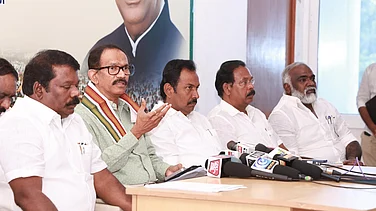India’s G20 Presidency is seen as a step for India to achieve the vision of being a trillion-dollar tourism economy by 2047. Tourism, along with trade and technology, is being envisaged as a sector to accelerate this development. Within the tourism sector, adventure tourism is quoted to be a ‘vehicle for achieving Sustainable Development Goals by 2030’. This article aims to shed light on the requirements and challenges that the field of adventure tourism must address in order to achieve these ambitious goals.
The narrative of rethinking and transforming tourism was initiated by the World Tourism Organisation (UNWTO) on the World Tourism Day in 2022 in Indonesia, which continues under India’s G20 Presidency. The Presidency provides an opportunity to India to expand its narrative of inbound tourism with special focus and emphasis on responsible and sustainable tourism and adventure tourism, which has been further echoed in the tourism working group meetings.
This approach aims to harness adventure tourism as a catalyst for employment generation, sustainable tourism practices, and economic growth. G20 in India is expected to push the growth of the tourism sector to the magnitude of 15 million inbound tourists in 2024, contributing more than $30 billion in earnings. The vision is to create 140 million jobs in the tourism sector and generate revenue of $56 billion foreign exchange by 2030. India’s adventure industry is expected to grow at a rate of 20 per cent per annum in the next five years and reach a value of $2 billion by 2028. Adventure tourism also echoes with the government’s initiative of ‘Make in India’ as adventure travel ensures that 60-90 per cent of the money remains with the local communities, thus strengthening their economic status.
The year 2018 was dedicated to celebrating Indian adventure tourism with a vision to position India among the top 10 global destinations by the end of the decade by developing infrastructure and setting up high safety standards. With more than 30 adventure verticals encompassing land, air and water, India offers exhilarating and unique experiences throughout the year. India has immense potential for adventure tourism with its diverse terrain and rich cultural heritage—from the Himalayan ranges in the north to the backwaters of Kerala in the south, from deserts in the west to a long coastline in the east and some exotic wildlife parks in the northeast. India offers a wide range of destinations and adventure activities, having a fan following all across the world!
With sustainability being a top priority during India’s G20 Presidency, promoting responsible and sustainable adventure tourism is imperative. Implementing targeted marketing campaigns to attract adventure enthusiasts from across the globe has the potential to significantly elevate footfall in India, capitalising on the country's inherent strengths in this domain.

The Ministry of Tourism has formulated a ‘Draft National Tourism Policy,’ which is also a holistic framework for sustainable and responsible growth of the tourism sector in the country. Proposals are also being discussed in the tourism working groups of G20 to bring adventure tourism under the cover of Swadesh Darshan 2.0 and to promote Adventure Tourism in Mission Mode. Earlier in 2022, the ‘National Strategy of Adventure Tourism’ was also launched to position India as a preferred destination for adventure tourism globally with strategic development of sustainable tourism, adventure tourism and ecotourism.
These announcements and commitments do help boost the development in the sector but there are challenges that the sector faces which need close attention. Adventure tourism often takes place in ecologically sensitive areas, including national parks, remote mountain ranges and various such fragile ecosystems. The influx of tourists and unregulated and irresponsible adventure tourism can put significant pressure on these environments, which can lead to loss of biodiversity and impact on local communities. Ensuring sustainability and minimising environmental impact is a critical challenge as adventure tourism grows rapidly. Balancing the desire for adventure experiences with responsible environmental practices can be difficult. Instead of focusing on mass tourism, adventure tourism strives for quality experiences with minimal ecological impact.
Adventure activities such as mountaineering, paragliding, river rafting and zip lining often involve inherent risks and thus making sure the safety of participants is crucial for the sustainability of the adventure tourism industry. All such aspects highlight how essential it is to have safety protocols and enough trained personnel in the industry.
Several steps have been taken to promote responsible and sustainable adventure tourism, minimise its impact on the environment, and take care of the safety of the participants. Pre-empting some of these challenges, ‘Indian Adventure Tourism Guidelines’ were developed by the Adventure Tour Operators Association of India (ATOAI) and the Ministry of Tourism in 2018 to provide Standard Operating Procedures for the adventure service provider’s fraternity.
These guidelines and strategies have given the much-needed impetus to the adventure tourism sector, but now it is important that under the G20 tourism working groups, we move to the next level of ensuring implementation of these guidelines. Since tourism is a state subject, in the past five-six years, it’s only a few states that have taken measures to create regulations and make legislations. Under the umbrella of G20, a thrust can be created to accelerate the adoption of these strategies and guidelines by other states too.
Also, to make sure the desired vision becomes a reality, it is crucial for the government and all industry stakeholders to continue collaborating. This partnership is necessary to establish adventure tourism as a key driver for economic growth and development in India.
The role of travellers is also important in this mission by being responsible and mindful while travelling, and this side of participation is something which indeed requires detailed deliberations and awareness programmes, and altogether a separate article.
It is important for both the business operators and consumers to focus on responsible growth of the sector through “Promote Responsibly, Operate Responsibly: Buy Responsibly, Travel Responsibly.”
(Vinayak Koul is the Director of SnowLion Expeditions. Views expressed are personal.)





















